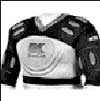
A look at rugby safety
Last week I wrote of the need to have an inward look at junior rugby. This was with a view to discuss the need for players to be taught to gain satisfaction from participation, improvement and competitive performance - without emphasis on win at all costs. As the season starts the authorities responsible for rugby at the junior level, the school section, must think and works out a system that is more in line with getting the best from the juniors. Playing the game should be to enjoy and to gain satisfaction without being open to injury. At the junior level it is essential that we ensure an environment where more and more measures are adopted for player safety. This includes the implementation of a system that will instill discipline. The repercussions of not taking action and or delaying will affect the game when junior national teams participate abroad. One issue for Sri Lankan losing to Hong Kong was that for almost the whole game they played with fourteen as players received yellow cards. This and other issues may be the result of the very casual nature the school section adopts when punishment is called. Rugby is a fast moving game that involves a lot of physical contact. Yet the game has no place for aggressive action that makes opponents open to physical injury. Preventive action should be taken so that the game is made for those who play it in the spirit that is meant to be. The requirement is for administrators to put into practice a system that will require the policing of injuries that are afflicted due to player misbehaviour that has no place in the game. This has been amply dealt with in the laws of the game as well as covered by the regulations governing the code of conduct as well as the disciplinary guidelines. What is needed is for those involved at the school level to ensure such guidelines are made known to all concerned and implemented strictly. It is important that the schools section should get the support and work with the Sri Lankan Rugby Football Union. Good practice and care can also reduce the risk of injury. There can be no place for unfit or half fit players on the field. With the knee being the area where the most injuries happen and the leg in general being injured frequently we can try and reduce the risk of injury in this area by targeting the legs for specific training. It is necessary to see that players are game fit and avoid allowing time on the field for those who are not fit and or not in the best physical condition. Another area that coaches and administrators have to take note especially at the junior level is for the need to use protective gear. This helps the reduction of one type of injury or another. Because rugby is a contact sport and there is a lot of upper body contact players need to take protective action. Because of the contact that is made during a game there is a need for some protective kit to be worn. These include: Studded rugby boots. Head guard, Shin Pads, Shoulder Pads. Stick mitts Mouth guards etc. Should mouth guards be made compulsory in rugby? They help to reduce injuries to the teeth, lips, mouth and tongue, and help to reduce jaw fractures. There is thinking that that they decrease the risk of concussion though it has not been proved with evidence so far. It is always good to play wearing protective gear and it should be encouraged at junior level. This is important at this stage of development so that with less injuries even of a minor nature will have less concerned parents. We will always have people who will not want to send their children to play rugby while others will argue that it is too costly and cannot be implemented.
|
|| Front
Page | News | Editorial | Columns | Sports | Plus | Financial
Times | International | Mirror | TV
Times | Funday
Times || |
| |
Reproduction of articles permitted when used without any alterations to contents and the source. |
© Copyright
2008 | Wijeya
Newspapers Ltd.Colombo. Sri Lanka. All Rights Reserved. |





